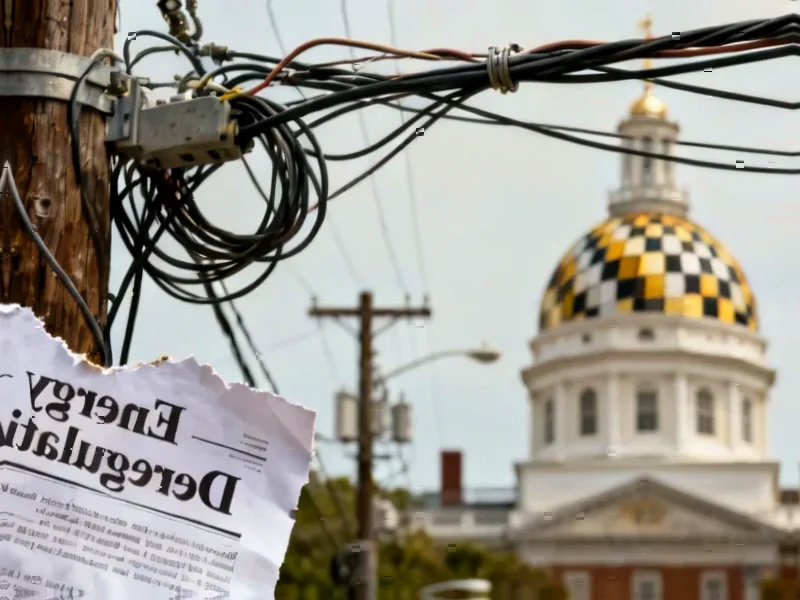According to Engineering News, South Africa’s Department of Electricity and Energy has revealed plans to repurpose the Integrated National Electrification Programme (INEP) to address a R75-billion backlog and connect 1.6 million households by 2030. Deputy director-general Thabo Kekana told Parliament that the existing model connecting 167,000 households annually is insufficient, requiring 300,000 connections yearly to meet the universal access target. The department plans to partner with the Development Bank of Southern Africa to create a blended finance instrument, potentially using the current R4-billion annual grant as leverage. The hybrid approach will combine conventional grid connections with decentralized microgrid systems, with criteria including cost, distance from infrastructure, and population density determining the solution type. This ambitious overhaul faces significant implementation challenges.
Table of Contents
The Technical Reality Behind the Numbers
The remaining 6% of unelectrified households represents the most difficult and expensive connections in South Africa’s electricity landscape. These are predominantly in remote rural areas, informal settlements, and regions with challenging topography where conventional grid extension becomes prohibitively expensive. The department’s acknowledgment that these connections are “more technically challenging and expensive” underscores a fundamental truth in infrastructure development: the last mile is always the most costly. The shift toward microgrid solutions reflects global trends in distributed energy, but implementing these systems at scale requires sophisticated planning, maintenance protocols, and local technical capacity that South Africa may struggle to develop quickly.
Funding Gaps and Economic Pressures
The proposed R75-billion price tag likely underestimates the true cost given inflation, currency volatility, and the technical complexity of remote connections. The reliance on Eskom and municipal partnerships introduces significant execution risk, given Eskom’s well-documented financial and operational challenges. The blended finance model faces fundamental questions about revenue recovery from households that cannot afford current electricity tariffs, let alone premium pricing for microgrid services. International experience shows that attracting private capital to rural electrification requires either substantial government guarantees or innovative payment mechanisms that haven’t been detailed in this proposal.
Implementation Challenges Ahead
The hybrid model’s success depends on coordination between national government, municipalities, private developers, and communities – a complex governance challenge in South Africa’s fragmented energy landscape. The three-tier microgrid approach creates additional complexity in standardization, procurement, and maintenance. Furthermore, the timeline appears exceptionally ambitious given that funding mechanisms remain undefined and the project management office hasn’t been established. The reference to learning from the Independent Power Producer Office is encouraging, but that office focused on large-scale generation projects, not distributed household connections requiring completely different implementation frameworks.
Broader Energy Transition Implications
This electrification push coincides with South Africa’s broader energy transition, creating both opportunities and conflicts. The proposed increase in free basic electricity from 50 kWh to 200 kWh would significantly impact utility revenues while providing meaningful relief to poor households. However, this comes as Eskom and municipalities struggle with existing financial pressures. The tiered tariff models mentioned could help manage demand but require sophisticated metering infrastructure that many rural areas lack. Successfully implementing this program could position South Africa as a leader in innovative rural electrification, but failure would leave millions without reliable power and deepen existing inequalities.
Realistic Outlook and Critical Questions
Meeting the 2030 target appears unlikely without immediate, decisive action on multiple fronts. The department must quickly resolve fundamental questions about funding allocation, technology standards, and implementation partnerships. The lack of detail on how investments will be recouped from impoverished communities suggests the economic model remains theoretical rather than practical. Additionally, the threat of illegal connections highlights the need for affordable pricing structures that don’t create perverse incentives. While the hybrid approach is technologically sound, the implementation timeline seems optimistic given the scale of coordination required between multiple stakeholders who haven’t demonstrated strong collaborative capacity in recent years.



